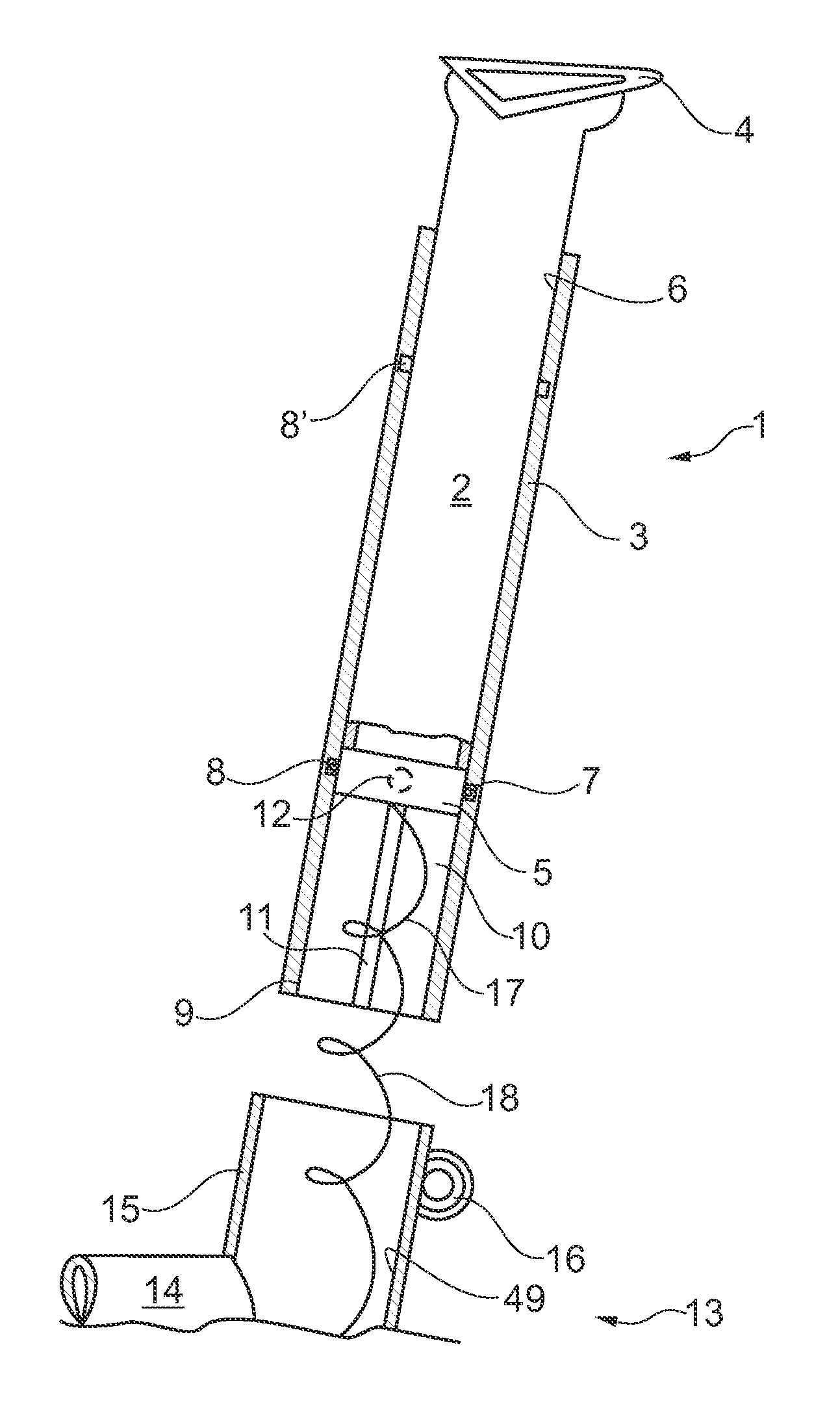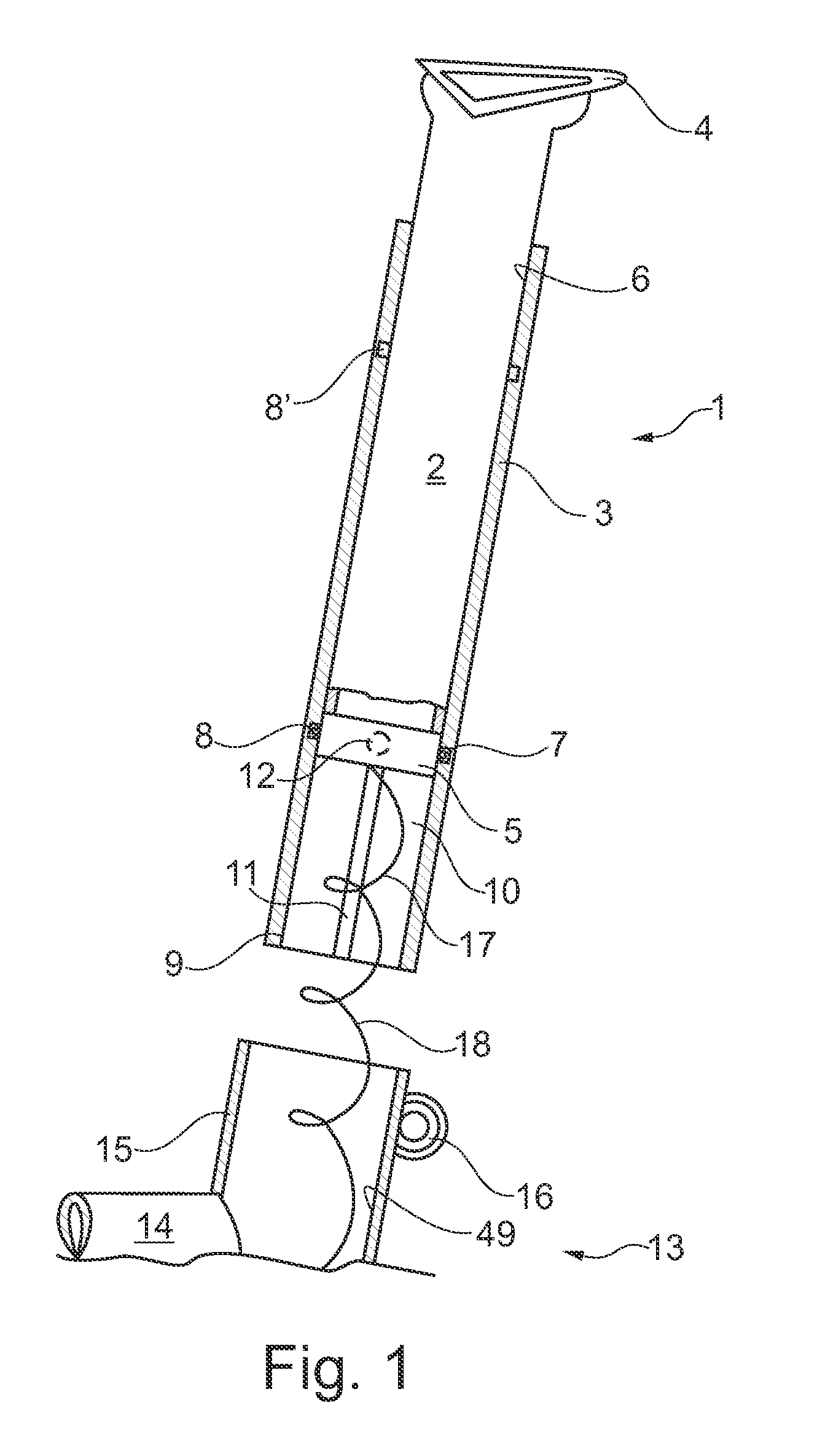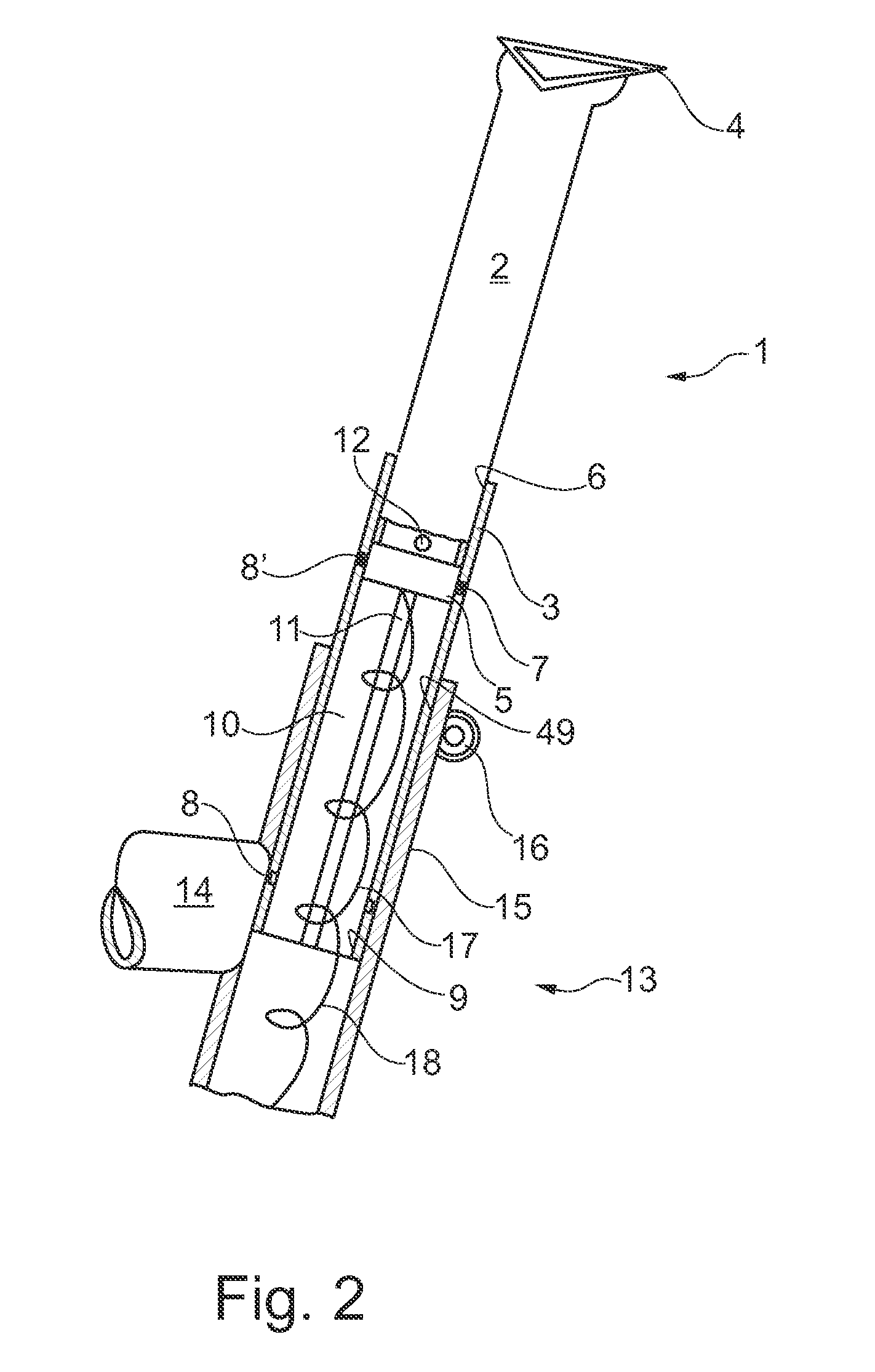Adjustable-length seat post
a seat post and adjustable technology, applied in the field of adjustable seat posts for bicycles, can solve the problems of not being able to eliminate the possibility of the rider getting caught on the loop, behind or in front of the saddle,
- Summary
- Abstract
- Description
- Claims
- Application Information
AI Technical Summary
Benefits of technology
Problems solved by technology
Method used
Image
Examples
second embodiment
[0060]FIG. 4 shows the energy transmission device 17, wherein the energy transmission device 17 is configured here as a limp cable 22. The cable 22 also has a first end 19 and a second end 20. The first end 19 is connected to a servo motor which is flange-mounted to the locking device 5, not shown here. The second end 20 is firmly connected to the seat tube 15. The cable 22 is considerably longer than the distance between the locking device 5 and the fastening on the seat tube 15. The cable 22 is guided over a mandrel 23, which is firmly connected to the seat tube 15, and fastened to the mandrel. The cable 22 thereby forms a first bend 24 which is open towards the second end 20 of the cable 22. The cable 22 furthermore forms a second bend 25 which is open towards the sliding tube 2. If the sliding tube 2 is now shifted along the double arrow 21 in the stanchion 3, a distance X between the second bend 25 and the mandrel 23 changes. Of course, the cable 22 can also be guided in a prot...
fourth embodiment
[0062]FIG. 6 shows the energy transmission device 17. The energy transmission device 17 consists of a rotary bar 29 which is connected by its one end 19 to the locking device 5 and extends in the longitudinal direction of extension of the sliding tube 2, and an entrainer 30. The rotary bar 29 consists of a round rod which has a continuous flattening 31. This is clearly visible in FIG. 7 which shows a cross-section through the rotary bar 29 and a plan view of the entrainer 30. The cross-section through the rotary bar 29 is shown hatched.
[0063]The entrainer 30 is fastened in the seat tube 15 in such a manner that it can turn but is invariant in height relative to the seat tube 15. The rotary bar 29 is displaceable along its longitudinal direction of extension relative to the entrainer 30.
[0064]It can also be clearly seen in FIG. 7 that an internal opening 32 of this entrainer 30 has the external contour of the rotary bar 29. In addition, the entrainer 30 has a side arm 33 which is fir...
PUM
 Login to View More
Login to View More Abstract
Description
Claims
Application Information
 Login to View More
Login to View More - R&D
- Intellectual Property
- Life Sciences
- Materials
- Tech Scout
- Unparalleled Data Quality
- Higher Quality Content
- 60% Fewer Hallucinations
Browse by: Latest US Patents, China's latest patents, Technical Efficacy Thesaurus, Application Domain, Technology Topic, Popular Technical Reports.
© 2025 PatSnap. All rights reserved.Legal|Privacy policy|Modern Slavery Act Transparency Statement|Sitemap|About US| Contact US: help@patsnap.com



